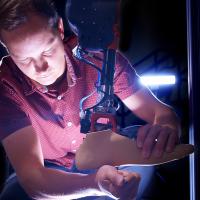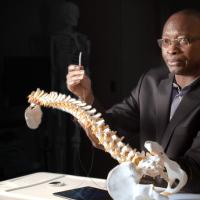The thought of giving birth is terrifying for a lot of new mothers, and understandably so. There’s a host of complications that can arise in the delivery room, from excessive bleeding to fetal distress.
But a group of healthcare professionals in Falls Church, Virginia is doing all they can to prepare themselves for the worst case scenario. They’re using robotic birth simulators that can blink, breathe, and make noise, to enact real emergency situations.
The Need for Better Medical Training
Medical training methods have come a long way, but there is certainly still room for improvement. Recent studies show that the maternal mortality rate has more than doubled in the past few decades.
In May of 2019, the Centers for Disease Control and Prevention reported that three out of five pregnancy-related deaths could have been prevented. In addition to a lack of access to healthcare, delayed diagnoses and missed warning signs by hospital staff were named key contributors to the statistic.
An ongoing USA Today investigation on the issue sparked involvement from Congress, after it detailed hospitals’ “widespread failures” to follow national best practices for safety in the delivery room.
The House Ways and Means Committee is seeking answers from hospitals throughout the nation and released a statement saying, “With this investigation, we are committed to finding out why these deaths are happening and where Congress can take action to not only prevent these deaths, but also reverse this trend.”
The Robotic Birth Simulator That’s Saving Lives
Enter ICAMS, the Inova Center for Advanced Medical Simulation. With a state-of-the-art training facility, ICAMS helps doctors and nurses identify common mistakes and become more aware of red flags that could lead to a more serious issue.
They use robotic, childbirth simulators that are programmed to react to all sorts of unique scenarios. In addition to operating under preset conditions, the medical mannequins can be controlled manually.
An operator outside of the practice delivery room has the ability to administer changes wirelessly to the mannequin’s vitals. Being able to influence its temperature, respiratory rates, and heart rates make the enactments all the more realistic.
These futuristic birth simulators are a game-changer in the field of medical training and they’ve already proven their value in the hospital.
One team of doctors and nurses practiced a rare (one in 10,000) emergency scenario in which a pregnant mother went into cardiac arrest. Later that day, the team encountered the same exact issue. Because they were well-rehearsed, they were able to put their newfound skills into use and save the mother’s life.
Over the past year, the training provided at ICAMS has helped shorten the overall length of hospital stays at Inova medical centers. It’s also decreased the amount of blood transfusions and hemorrhages.
Raising the Bar for Advanced Medical Training
The use of simulators in the medical field isn’t new, but ICAMS is taking it to the next level. The Center focuses on providing world-class education using the latest technologies.
What sets ICAMS apart is how realistic its replicated hospital setting is, including an emergency department, labor and delivery unit, ICU, plus inpatient and outpatient rooms. But instead of patients, the rooms are filled with robotic medical mannequins.
And it doesn’t stop there. Each mannequin is individually named and has its own record in the hospital’s system. One student has “delivered” babies from a medical mannequin, named Noelle, four times.
The elaborate setup effectively replaces the traditional “see one, do one” method of medical training. ICAMS is a safe place for students to practice emergency procedures hands-on, and prepare for the pressure of these situations after they leave the program.
One student said, “It helps you feel more comfortable in those sorts of situations because you know what’s going on, you know what needs to happen… you’ve seen it play out already.”
Meet the Medical Simulation Expert
Doctor Emily Marko, Medical Director at ICAMS, never thought she would become a simulation expert, but after a retinal detachment caused her to temporarily lose her vision, she pursued a degree in medical education.
A firm believer in experiential learning, Dr. Marko took it upon herself to learn how to program birth simulators so she could use them to better prepare students for common obstetrical emergencies.
She is now a teacher who oversees countless students in ICAMS’ realistic hospital environment, using advanced simulation to facilitate “learning by doing.”
“To build that kind of muscle memory and that preparation really takes doing drills,” Dr. Marko says.
At ICAMS, Dr. Marko provides live feedback in the delivery room, while students diagnose and treat issues such as shoulder dystocia. Once the enactments are over, students debrief with video replays and evaluations that help make procedures even more efficient.
To Marko, the experience is invaluable: “Every time you teach one student, one doctor, one nurse, you reach 1,000 patients because they touch all those people.”
For more interesting news about innovations in the medical field, from brain surgery robots to virtual reality training, subscribe to Freethink.


